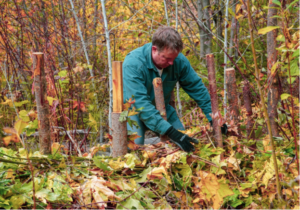Microsoft’s approach to water stewardship recognizes that improvements in efficiency alone are not enough to address or compensate for the company’s consumptive water use. Driving local engagement and stewardship to replenish a volume of water equivalent to the company’s consumptive use, while supporting global water policy objectives, will have positive outcomes for communities, the environment and reduce Microsoft’s physical and reputational water risks. One important part of the company’s overall water stewardship strategy includes supporting replenishment or restoration projects that have social and environmental benefits.
The first three restoration projects the company chose to support were in the Wenatchee Entiat subbasin in Washington. The company has a data center in nearby Quincy. They teamed with Change the Course to invest in water restoration and engage their employees in the process.
How They Inspire
In fall of 2018, Microsoft employees took a field trip to Darby Canyon in Central Washington for a day of giving, learning and building – helping to expand important beaver habitat through the building or “weaving” of beaver dam analogs (BDAs).

As part of the company’s commitment to local stakeholder engagement, they have also offered to host an educational site visit for the Quincy Valley School, a small private school who as part of their curriculum encourages community participation and field trips.
The Impact They’re Making
Microsoft supported the Wenatchee & Entiat River Habitat Restoration and Irrigation Modernization projects as well as the Roaring Creek Flow Restoration project. These projects are helping to increase flows and habitat conditions for migrating fish, remove fish passage barriers, and test new irrigation techniques that can improve the quality and quantity of fruit, while using less water.

